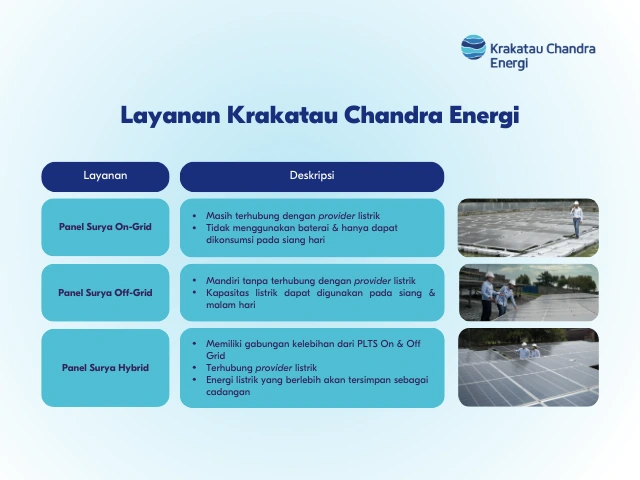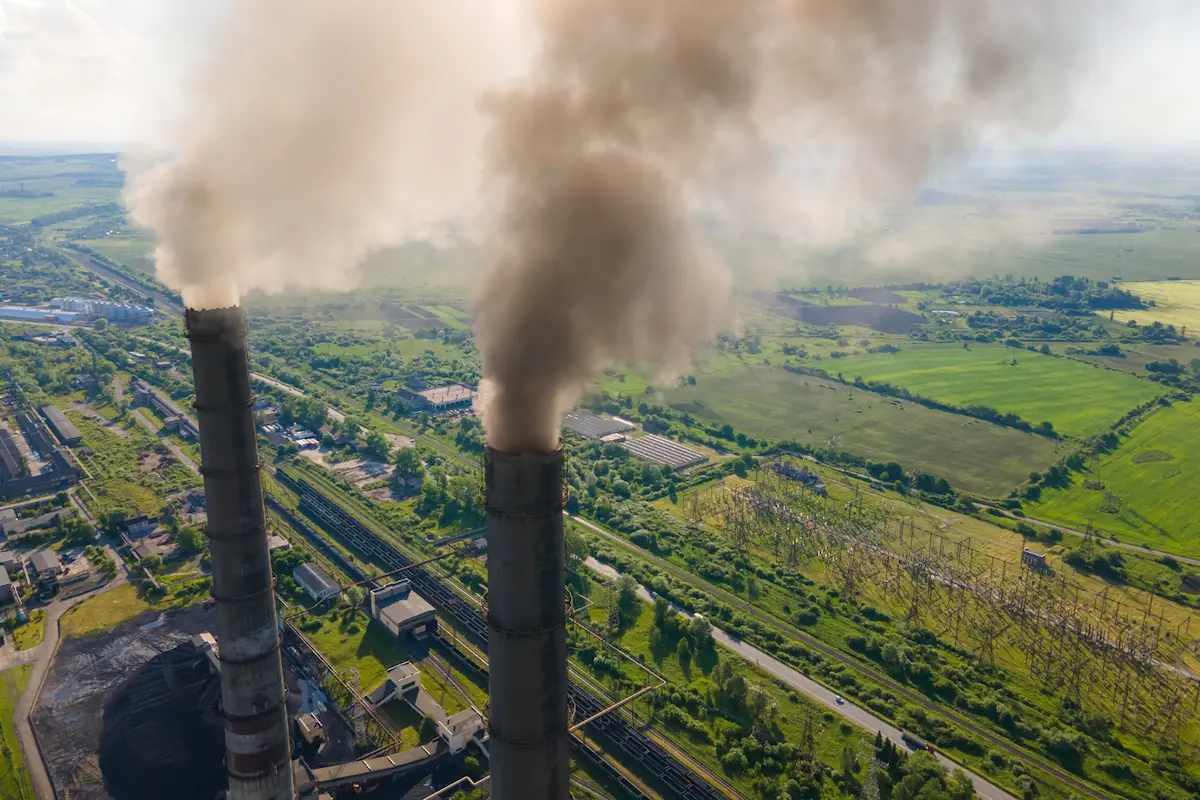Table of Contents
Have you noticed the air getting hotter lately? The phenomenon of increasing temperatures on Earth, or global warming, is closely related to the greenhouse gas effect. Greenhouse gases can create a layer in the atmosphere that prevents sunlight from escaping.
So, what are the greenhouse gases, what are the causes of greenhouse gases, and how can we deal with them? Find the answers in the following article!
Causes of Greenhouse Gases
According to the Emissions Database for Global Atmospheric Research (EDGAR), greenhouse gas emissions in Indonesia have increased by 38.77% from 2013 to 2020. In 2020, greenhouse gas emissions reached 1,200.20 Mt CO₂eq/year.
Greenhouse gas increases continue due to human activities. The main causes include:
1. Deforestation and Land Clearing
The first cause of greenhouse gases is deforestation and land clearing that is not accompanied by reforestation. Forests play a crucial role in absorbing greenhouse gases, especially CO2. With fewer trees available to absorb CO₂, more carbon dioxide remains trapped in the atmosphere.
2. Fossil Fuels
With vehicle ownership now widespread, vehicle emissions are one of the causes of greenhouse gases because they contain carbon dioxide, methane, and nitrous oxide.
According to the Indonesia Energy Transition Outlook (IETO) 2024 study, the transportation sector is the third-largest contributor to carbon emissions after the energy and industrial sectors. Transportation using fossil fuels contributed approximately 150 million tons of carbon emissions in 2022.
3. Waste
Humans generate waste and garbage from daily activities, including household waste and waste from livestock, agriculture, and industry. If not managed properly, especially organic waste, it will contribute to the increase in greenhouse gases.
4. Use of Fertilizers
Chemical fertilizers used to nourish plants, especially those containing nitrogen substances like urea and ammonium nitrate, are one of the causes of the increase in greenhouse gases.
The massive use of chemical fertilizers can lead to the release of nitrous oxide (N2O) gas, one of the greenhouse gas emissions with strong warming potential. In addition, the production and distribution processes of fertilizers also contribute to greenhouse gas emissions.
5. Marine Pollution
In addition to trees and green plants on land, there are marine organisms that can also absorb carbon dioxide and produce oxygen naturally, namely phytoplankton. However, environmental and marine pollution can disrupt and reduce phytoplankton populations. As a result, marine biota that can absorb carbon dioxide are decreasing, and the presence of this compound will continue to pollute the environment.
Read also: 11 Must-Have Eco-Friendly Products: Which One Is Your Fave?
Types of Greenhouse Gases
According to the Center for Climate and Energy Solutions, greenhouse gases have a radiative efficiency, which is the ability to absorb and reflect radiation to the Earth. This radiative efficiency is measured in terms of Global Warming Potential (GWP).
The greenhouse effect occurs when solar heat absorbed by Earth’s surface is trapped in the atmosphere instead of being released back to space. As a result, there is an increase in temperature on the Earth’s surface.
The presence of greenhouse gases in the atmosphere does serve to maintain the Earth’s temperature, but their continuously increasing amount can have negative consequences. Some of the main greenhouse gases are:
1. Carbon Dioxide (CO₂)
Carbon dioxide is a natural gas produced from the respiration process of living beings, volcanic eruptions, vehicle exhaust, and smoke from combustion. Although it is a gas that normally exists in the air, excessive amounts can produce a greenhouse effect.
2. Methane (CH₄)
Methane gas is essentially a product produced due to natural decomposition. Some activities contributing to methane primarily come from livestock farming, agriculture, waste decay, as well as oil and gas production.
3. Nitrous Oxide (N₂O)
The next greenhouse gas is nitrous oxide, which mostly comes from the massive use of fertilizers, vehicle exhaust, the production of nitric acid chemicals, and biomass burning. This gas has a warming potential 273 times greater than CO2.
4. Fluorinated Gases (F-Gases)
Fluorinated gases, which can be in the form of hydrofluorocarbons (HFCs), perfluorocarbons (PFCs), sulfur hexafluoride (SF₆), and nitrogen trifluoride (NF₃), are the strongest greenhouse gases. These F-gases are produced from various daily activities in households and industries.
Impact of Greenhouse Gases
The increase of greenhouse gases in the atmosphere certainly has negative impacts on the environment, primarily triggering global warming. Here are other effects caused by greenhouse gases:
- Melting of polar ice caps, which normally reflect sunlight away from Earth.
- The rise in sea levels causes floods in coastal cities and low-lying areas.
- Extreme weather conditions, such as heat waves, hurricanes, or very high rainfall.
- Animal migration due to changes in their habitats caused by climate change leads to disasters like floods, droughts, wildfires, or excessive heat.
- Reduced soil fertility affecting food production.
How to Reduce Greenhouse Gases
Greenhouse gas emissions are increasingly contributing to serious problems in the environment. Therefore, Warga Asri must take several steps to reduce carbon emissions to protect the Earth. Some ways to mitigate the effects of greenhouse gases include:
1. Using Renewable Energy Sources

Switching to renewable energy sources such as solar, wind, water, and geothermal can be an effort to reduce dependence on fossil fuels. Renewable energy sources are more environmentally friendly and have low carbon emissions.
Regarding renewable energy sources, Chandra Asri Group has also adopted solar panel technology as an energy source through its subsidiary, Krakatau Chandra Energi. KCE currently provides installation services for off-grid, on-grid, and hybrid solar panels.
2. Saving Electricity Usage
Power plants in Indonesia are still heavily dependent on fossil fuels such as gas, coal, and petroleum. Therefore, by saving electricity, you can also reduce greenhouse gas emissions.
3. Switching to Organic Fertilizers
Substituting chemical fertilizers with organic fertilizers is one effective way to reduce greenhouse gases. The use of organic fertilizers is not only environmentally friendly but also minimizes nitrous oxide greenhouse gas.
4. Use Public Transportation
Although it may seem trivial, using public transportation can effectively reduce the carbon footprint. Public transportation generates far fewer emissions per person, reduces congestion, and decreases air pollution compared to using private vehicles.
This is a complete explanation regarding the causes of greenhouse gases, their impacts, types, and ways to reduce them. Remember that the small steps you take can make a big difference in reducing carbon emissions.
As an environmentally conscious generation committed to environmental sustainability, you can also be actively involved in positive environmental activities by joining Indonesia Asri.
You can also participate in the #AksiAsri campaign to contribute to environmental preservation. What are you waiting for? Register yourself now and become a Warga Asri for a healthier planet!
Read also: 10 Effects That Can Be Made to Overcome Environmental Pollution









